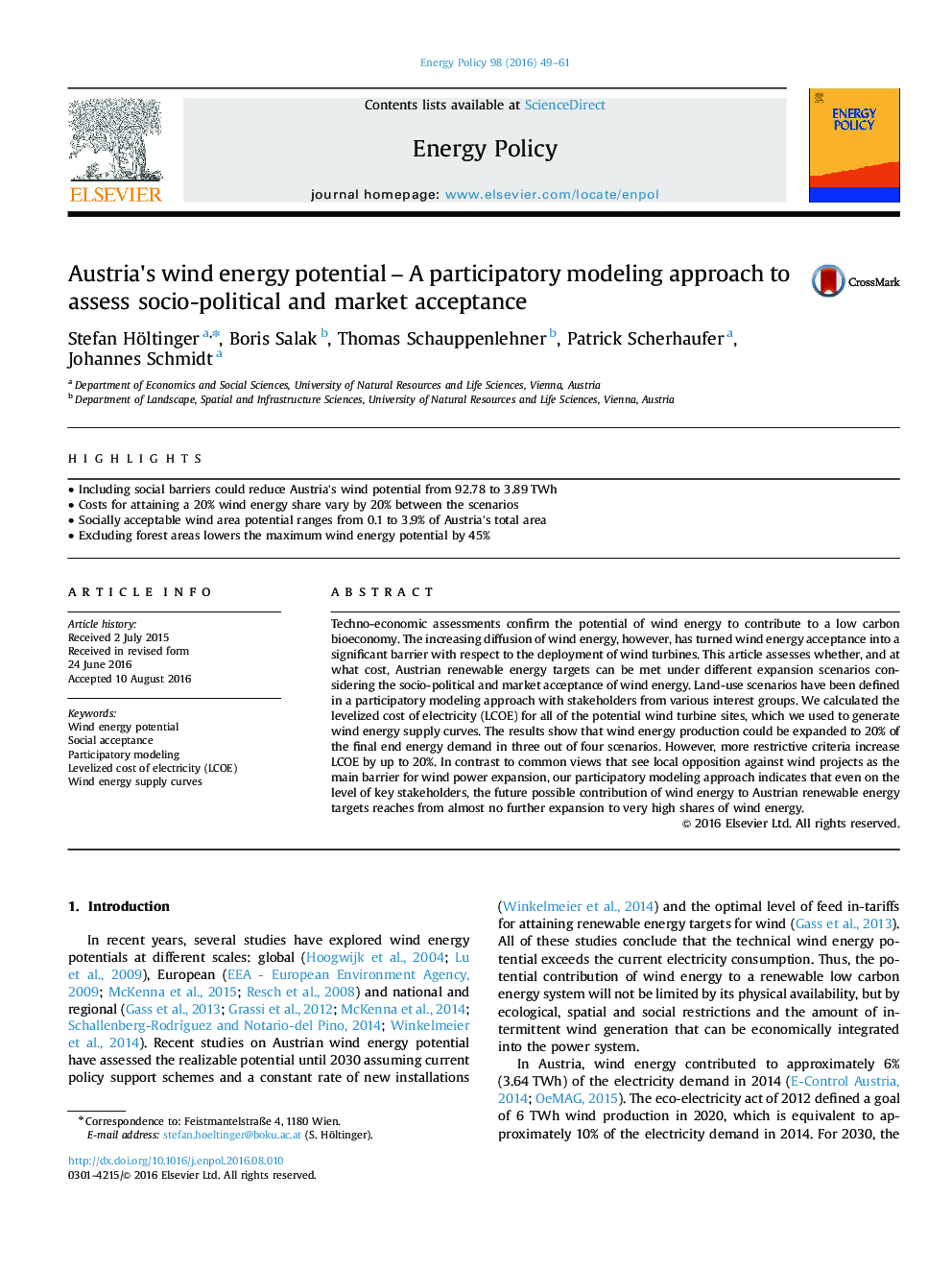| Article ID | Journal | Published Year | Pages | File Type |
|---|---|---|---|---|
| 7398360 | Energy Policy | 2016 | 13 Pages |
Abstract
Techno-economic assessments confirm the potential of wind energy to contribute to a low carbon bioeconomy. The increasing diffusion of wind energy, however, has turned wind energy acceptance into a significant barrier with respect to the deployment of wind turbines. This article assesses whether, and at what cost, Austrian renewable energy targets can be met under different expansion scenarios considering the socio-political and market acceptance of wind energy. Land-use scenarios have been defined in a participatory modeling approach with stakeholders from various interest groups. We calculated the levelized cost of electricity (LCOE) for all of the potential wind turbine sites, which we used to generate wind energy supply curves. The results show that wind energy production could be expanded to 20% of the final end energy demand in three out of four scenarios. However, more restrictive criteria increase LCOE by up to 20%. In contrast to common views that see local opposition against wind projects as the main barrier for wind power expansion, our participatory modeling approach indicates that even on the level of key stakeholders, the future possible contribution of wind energy to Austrian renewable energy targets reaches from almost no further expansion to very high shares of wind energy.
Keywords
Related Topics
Physical Sciences and Engineering
Energy
Energy Engineering and Power Technology
Authors
Stefan Höltinger, Boris Salak, Thomas Schauppenlehner, Patrick Scherhaufer, Johannes Schmidt,
